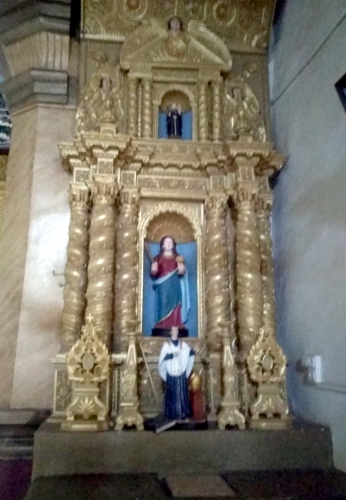
The history of the Catholic Church in Goa since the 16th century reveals a fervent devotion to St Mary Magdalene, one of the very few persons present at the crucifixion of Jesus Christ and the first witness the Resurrection.
However, this devotion has largely faded over the centuries and most structures dedicated to her no longer exist. A few art works and altars dedicated to her in Goa offer a glimpse into the devotion of the saint, commonly referred to as the “Apostle to the Apostles”, whose feast is celebrated on July 22.
The Dominicans established their first house in Old Goa by 1548 and they fostered a special devotion to Mary Magdalene in their monastery. They founded the parish church of Siridao between 1554 and 1603 and it was dedicated to this saint. The Siridao church had her as the Patroness until 1869.
The Dominicans also established the convent of St Barbara in Chimbel. According to the archival sources of this convent, an altar dedicated to St Mary Magdalene existed there and Masses were regularly offered on her altar.
The inventory of the Chimbel Carmelites of 1835 indicate that they had an altar dedicated to this saint. St Teresa of Avila, the Holy Mother of all Carmelites, herself was a great devotee of this saint, to the point of being called the ‘Second Magdalene’. The Chapel of Livra Febres in Chimbel has an altar dedicated to St Mary Magdalene.
In the 16th and 17th centuries, Old Goa was the capital of the Portuguese possessions of the East and enjoyed a rich status. However, vices were abounding in the city. Seeing this moral depravity, the seventh Archbishop of Goa, D. Aleixo de Menezes in 1610 established the Recolhimento da Sta. Maria Magdalena in Old Goa for the purpose of sheltering women of ill-repute who wanted to live a penitential life of conversion. It was founded in a mighty building near the Jesuit college of St Paul
In 1705, it was shifted near the Recolhimento of Nossa Senhora da Serra in Old Goa (near the present Old Goa cemetery). The administration was entrusted to the Misericordia. On September 23, 1611, he formulated the statutes for this house. They followed the rule of St Augustine. Their penitential life was reflected in their black dress, short hair, ordinary slippers and no usage of cosmetics.
This house along with the Serra was relocated to the Carmelite convent of Chimbel in 1841. In 1924, the Recolhimentos were transferred to Altinho-Panjim, where they continued to exist under the name of Recolhimento of Serra and Magdalena. However, it is now known as Recolhimento da Serra, as indicated by the Provedoria website.
Bartholomew Esteban Murillo (1617-82) was a famous baroque Spanish painter known for his devotional art. A sketch of Mary Magdalene enraptured in ecstasy painted by him is now located in the vestry of the Basilica of Bom Jesus.
It has the unique motif of the Holy Spirit descending upon the Magdalene who fainted with the Love for God. The Angels descend with a wreath of flowers to console her and this painting stirs up our mystical sense.
A bass relief of Mary Magdalene carved in 1733 is displayed in the Pilar Seminary Museum. The symbols in that relief are interpreted as featuring the symbols of the four great Indian religions.
These are the few relics of the past of Goa where the cult of the Magdalene enjoyed a special status. She is the sign of conversion and mysticism. Her surviving art works are truly a part of the Goan heritage. The memory of Magdalene invites every Goan to enter the depth of their hearts and experience the Divine through a process of continuous conversion.
(The writer is a Goa-based researcher on the Carmelite religious congregation)